How Does Narcan Work?
Narcan is the brand name for a drug called naloxone. It’s derived from the opium poppy but has no narcotic effect of its own. Narcan works to reverse an opioid overdose by removing the opioid’s molecules from the brain’s opioid receptors. It does this through something called affinity. Narcan has a higher affinity or preference for the opioid receptors than opioids do. It enters the brain, kicks the opioids off the receptors and then sits on the receptors itself. As long as the Narcan molecule is there, nothing else can attach. The overdosed opioid circulates around until the body eventually eliminates it. Without access to the opioid receptors, it can do nothing. This article will discuss the following question: How does Narcan work?
Opioids kill by flooding the brain’s opioid receptors to the point of causing the receptors in the brain stem controlling the breathing reflex to shut down. They cannot kill any other way and are not otherwise acutely toxic to the body. Before the advent of naloxone in the early 1970s, opioid overdose was difficult to treat, especially in the field. The only thing doctors could really do was to intubate the patient and keep them breathing until the drug wore off. Opioid overdose usually happens quickly. In those days, it often wasn’t possible to get the patient to the hospital in time.
Narcan is always carried by first responders and field medical personnel, but anyone can administer it. It has saved countless lives from opioid overdose.
History of Narcan
Naloxone was first discovered in the early 1960s by some New York scientists looking for a drug to counteract constipation produced by chronic opioid therapy. Opioids cause constipation by binding to the opioid receptors present in the stomach and intestines. This type of constipation can be severe and is typically resistant to standard constipation treatments. Since naloxone was known to block opioids, the scientists reasoned that it may reverse constipation caused by opioids, and naloxone would indeed relieve the constipation from this cause. The treatment idea was scrapped when scientists realized the naloxone would prevent any pain relief from the opioid therapy as well.
New therapies available today for opioid-induced constipation actually use this same concept, but these drugs only reverse the opioid’s effects on the intestines. They cannot enter the brain and have no effect on the opioid receptors there, so they don’t interfere with pain relief.
There is another drug similar to naloxone that is called naltrexone. It’s the opioid blocker in the opioid use deterrent drug Vivitrol. Given by injection once a month, Vivitrol works to block any effect from any kind of opioid for thirty days. For that entire time period, the brain’s opioid receptors are blocked. No opioid effects can be felt, removing the threat of impulse opioid use.
More Information about Narcan
Narcan can be purchased from a pharmacy without a prescription for home use. It’s in the form of a nasal gel or spray. Naloxone is not effective by mouth and must be given into the nostrils or by injection. If someone close to you abuses opioids, it would not be a bad idea to keep naloxone around for an overdose emegerncy, when every second counts. Many lives have been saved in this way. If the pharmacy doesn’t carry it, ask them to order it or try another pharmacy.
Narcan works only against opioid overdose. Because it targets only the brain’s opioid receptors, it cannot reverse an overdose caused by another class of drug.
When Narcan is given to an overdose victim, the effect is dramatic and almost immediate. Someone who wasn’t breathing a moment ago is now sitting up and talking and acting quite normally. However, someone who is physically dependent on opioids will also be thrown into instant, full-blown opioid withdrawal. This is because their brain cannot function normally without opioids, and the Narcan just tossed all the opioids off the receptors. This person will wake up instantly sick from withdrawal and in high distress. Medical responders will expect this response and will be ready to deal with it. In a home setting, this will not be the case. Always take an overdose victim to the emergency room even if they seem fine. For one thing, the Narcan will typically wear off before the opioid does. Overdose symptoms and problems with breathing could still return.
Let us Help
For more information about Narcan or any other drug abuse issue, call our professional drug counselors at 424-499-2603 anytime. We offer hope, help and solutions that work.
We offer more than a recovery program, offer an experience.
© 2021 California Centers for Recovery. All Rights Reserved.
